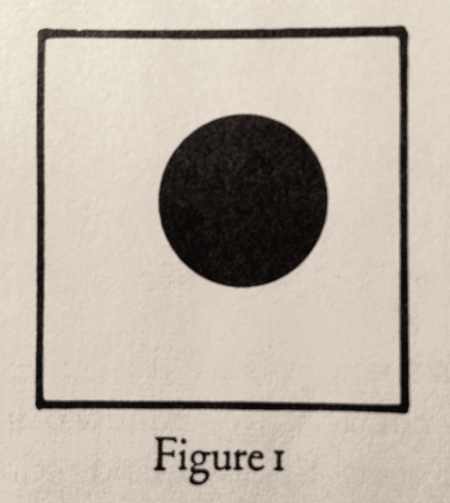February 13, 2012
The Hidden Structure of a Square

Art and Visual Perception, Rudolf Arnheim, 1954. Page 1, figure 1.
More Arnheim:
A snip:
In all of your works on visuality and art, certain concepts are especially important: structure and tension, order and disorder. Can one say that images are the basic principle of "the order of things," as Michel Foucault would call it, that holds the world together with "figures of knowledge?" Yes, that is definitely important. You see, this is the fundamental difference between me and Siegfried Kracauer. For Kracauer the world was raw material; from this concept he, in his Theory of Film, derived the definition of the photographic and filmic image as contributing to the "rescue of outer reality" and introducing physical nature in its original state. But images do not imitate reality, they hint at it. They have the ability to make the essential part visible, and are thereby a fundamental principle for understanding the world. Vision and perception are not processes that passively register or reproduce what happens in reality. Vision and perception are active, creative understanding. You have to imagine the following: When we observe something, then we reach for it; we move through space, touch things, feel their surfaces and contours. And our perception structures and orders the information given by things into determinable forms. We understand because this structuring and ordering is a part of our relationship with reality. Without order we couldn't understand at all. Thus in my opinion the world is not raw material; it is already ordered merely by being observed.Posted by Dennis at February 13, 2012 5:59 PM
Leave a comment